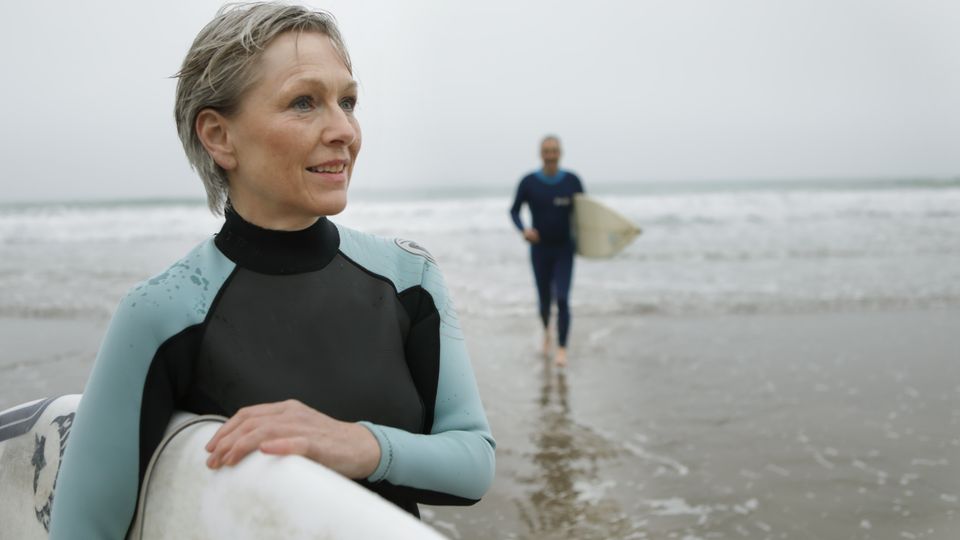
New explorations
From ancient practices to modern concepts and a thriving industry – wellness has transformed greatly as its popularity has spread around the world.
Presented by Global Wellness Institute.
For centuries, people all over the world have been taking steps to improve their health and wellbeing: whether Ayurveda in 3,000 BC India, creating regimens from yoga to mediation to create harmony between body, mind and spirit, or the holistic approach of traditional Chinese wellness practices like acupuncture, herbal medicine, qi gong and tai chi.
Wellness gained renewed popularity towards the end of the 20th Century as conditions of contemporary life increasingly produced multiple challenges for health and wellbeing. The word “wellness” has now made the jump into our daily vernacular.
The Global Wellness Institute (GWI) has been at the forefront of defining and researching the wellness industry in the 21st Century. In defining wellness tourism and wellness in the workplace, among other sectors, their market research has created new opportunities for innovators, researchers, investors and consumers to explore what it means to be well.
 Considering so much could be considered part of our wellbeing, defining the industry is a task in itself. What does wellness mean today, and where is wellness going?
Considering so much could be considered part of our wellbeing, defining the industry is a task in itself. What does wellness mean today, and where is wellness going?
Ophelia Yeung, an economist and senior research fellow at the GWI, explains that in order to define “wellness”, which in 2008 was a nascent industry, she first had to define “spas” – something that consumers have always associated with wellness. In some countries, spas “had to offer water treatments”, in keeping with European traditions, she says. But other countries have different definitions that include centres that offer massages. Over a decade, her team expanded their research to defining and measuring the wellness economy and its 11 sectors: personal care and beauty, healthy eating, nutrition and weight loss, physical activity, wellness tourism, traditional and complementary medicine, public health, prevention and personalised medicine, wellness real estate, mental wellness, spas, workplace wellness, and thermal or mineral springs.
Bringing together these elements required finesse: something too broad would be “meaningless, but if you’re too restrictive, then you’re not being helpful either”, she adds.
Yeung and her colleagues Tonia Callender and Katherine Johnston settled on the GWI’s definition of wellness as being the “active pursuit of activities, choices and lifestyles that lead to a state of holistic health”. Then, the team looked at niches within wellness and where their industry crossed over with others.
For example, Yeung describes defining wellness tourism in 2013 as a “monumental effort”. It required dividing the industry into those who travelled with the sole purpose of experiencing wellness – primary wellness tourism – from those who incorporated elements of wellness, like a massage or culinary experience, into another trip – secondary wellness tourism.
Once this had been established, Yeung and her team could work out how many people were making these trips and how much they were spending.
The team’s work has led to a global valuation of wellness at $4.4tn (£3.9tn) in 2020, and is expected to reach $7tn (£6.2tn) in 2025.
By valuing the industry, investors are able to see where opportunities lie, says Yeung, pointing to airlines that now offer meditation apps and hotels that market the quality of their night’s sleep to attract secondary wellness tourists, who otherwise might not have been aware of those new consumers.
Beth McGroarty, vice president of research at the Global Wellness Institute, adds that some parts of the industry have changed significantly since 2020, as researchers, consumers and investors reacted to the pandemic. “They now put a higher value on health and wellness, but I do think that they’re more sceptical, reflective and demand some evidence,” she says.
Covid-19 emphasised the extent to which individual and collective health are connected and, along with mental and social health challenges caused by isolation, has shone a light on the need to consider health beyond the physical.”
McGroarty has reported on trends in the wellness industry for 18 years and leads the Global Wellness Summit’s annual Trends Report. She says that over that time there has been a “massive cultural, anthropological and social shift towards wellness”, but the past two years have been particularly interesting.
“I think [with] the seriousness of the pandemic and accelerating climate change – we see what true wellness means is being redefined,” she says. “It felt like a vibe shift.”
 McGroarty says that there was a “fast fashion” approach to wellness up to 2019 in which new, often silly, trends would appear and disappear quickly, but since then the industry has been calmer, with a greater emphasis on robust, well-researched solutions.
McGroarty says that there was a “fast fashion” approach to wellness up to 2019 in which new, often silly, trends would appear and disappear quickly, but since then the industry has been calmer, with a greater emphasis on robust, well-researched solutions.
She says there has also been an emphasis on authentic, in-person interactions. During the pandemic, our “entire lives were subsumed by screens in the digital world – work, our fitness classes, our meditation,” she says. “And you’re seeing a rush now for real-life social wellness models again. There is an explosion in wellness clubs where the social is more important than the fitness or the meditation.”
McGroarty likens this post-pandemic trend to a similar push-back from consumers in 2008. “The first year we did our research [in 2008] was the year the smartphone arrived – wellness really took off,” she says. “And I think that is not a coincidence. The explosion of opinion, bad news, the constant pressures of social media, and being tethered to this machine in your pocket changed our minds, brains and our lives. And I think wellness very much came as a response to unprecedented stress levels.”
The next big movement, McGroarty says, will be to address loneliness, disconnection and community, which is “not easy to do”. But, because there’s more conversation about wellness now than there was 20 years ago when their research began, Yeung and McGroarty began, Yeung and McGroarty hope that the challenges will get smaller and the opportunities greater.























































